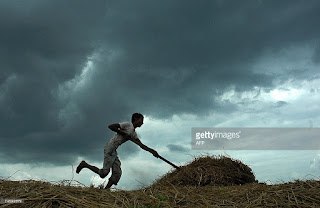History Of Monsoon
Monsoons are winds
that usually blow onshore during the summer. Monsoons are caused by unbalanced
heating of land and sea. Monsoon winds usually blow onshore from May to
October. In the Northern Indian Ocean, they bring heavy rains to the dry
places. Monsoons also happen on a smaller scale in China, Africa, Spain, and
the United States
In the summer the land
is mostly warmer than the sea. The warm land air rises and is then replaced by moist
air from the sea. This moist air produced the heavy rain that happened during a
monsoon. In the winter the ocean is mostly warmer than the land. At that time
warm sea air rises and is then replaced by cool, dry, land air. The summer
monsoon brings heavy rain to India from June to September. Sometimes it caused
landslides that sweep away whole villages. But still farmers need this rain to
irrigate. They used it to generate their electricity.
The monsoon festival named
as Teej is held in Rajasthan between June and August. In India good monsoons
bring stunning life and good harvests. According to people in Rajasthan, this
festival reunites family. The rains caused by monsoon gives the desert life and
helps crops grow. They are thanking & praying the Gods for the blessings on
their people.
During 1400 and 1850AD
was the little ice age. It was a smaller part of the earlier ice age. This
almost ended life. There are from 200 million to 1 billion people in the Indian
monsoon area. Monsoons give us not only good atmosphere, but also taught us how
to give a natural wonder to area.
Here are some safety tips on how to stay safe in a monsoon storm:
1.
Never stand anywhere elevated.
2.
Stay away from power lines.
3.
Make sure you have a first aid kit.
4.
Stay away from windows and glass stuff.
5.
Stay away from trees.
6.
Avoid metal objects during lightning.
7.
Never stand in an open area.
8.
Don't use land line telephones until for emergencies.
9.
Don't use sinks or showers.
10.
Unplug electronic device.



Comments
Post a Comment